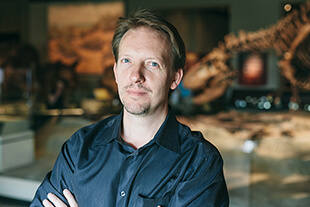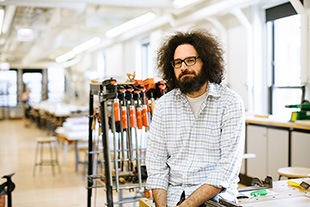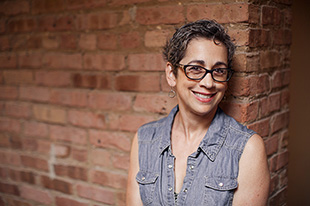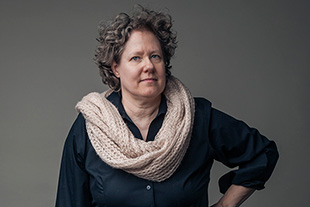Greg Foster-Rice
Visual Arts
Greg Foster-Rice talks about teaching, curating, and bringing Chicago’s rich photographic history into his classroom.
Since 2002, Associate Professor of Photography Greg Foster-Rice has been a proud member of Columbia College Chicago’s School of Visual Arts, whose reputation and current faculty colleagues continue to inspire him as a historian of photography.
Foster-Rice uses Chicago’s rich photographic history to connect his students to the city—and he recently jumped into that history himself as the curator for The Museum of Contemporary Photography’s exhibition The Many Hats of Ralph Arnold: Art, Identity and Politics (Fall 2018). Foster-Rice spent more than three years researching the life and legacy of Arnold, a well-regarded Chicago artist whose photographic collages appropriated and commented upon mass media portrayals of gender, sexuality, race and politics during the 1960s-80s. The exhibition will be touring the country in 2020, exposing this local artist and Chicago’s art history to an even wider audience.
Foster-Rice talked to us about teaching, curating, and bringing Chicago’s artistic heritage into his classroom.
What is unique about studying and teaching photography in the city of Chicago?
Chicago, as a place, is very exciting because it is a city with a long history of photographic experimentation in fields as diverse as commercial photography, photojournalism, documentary, conceptual photography, and abstract photography. And on top of that are all the vernacular photographers documenting events as significant as the Great Chicago Fire of 1871, the World’s Fairs of 1893 and 1933, and the political upheavals of the 1960s. Chicago is therefore not only the crossroads of America, but a crossroads for photography, mixing the professionalization of the medium with its explosion as a popular form of mass media and vernacular communication. In Chicago, I’m also fortunate to be able to teach from some of the world’s leading collections of photography, such as the Museum of Contemporary Photography on our campus.
Ralph Arnold fell into obscurity after his death in 2006. Why is he worth studying today?
To a certain extent, Arnold was ahead of his time in the ways that he openly drew upon his own multilayered identity as a black, gay veteran in artworks that mixed photography, painting, and other media. Today, artists tend to acknowledge that their sexuality, gender, race, and class all intertwine to create an identity, and they work in a more interdisciplinary, less medium specific style. We’re more open to that in the 21st century. Now that we have a more open understanding of multi-interdisciplinary practice and intersectional identity, it’s really the perfect time for us to understand how [Arnold’s] work tried to operate in the 60’s and 70’s, and also to compare him with contemporary artists.
What makes Columbia’s program unique from other schools?
I’m really proud of our program, whose legacy drew me to Columbia. Part of it is the faculty who teach here, and part of it is the work that our students have done. Matt Siber MFA ’03 has had exhibitions at the DePaul Art Museum and has a very active practice here in Chicago. Natalie Krick MFA ’12 just recently won [the Aperture Portfolio Prize and a Foam Paul Huf Award nomination] and is doing really well with her work. It’s just really exciting to see our students carry that legacy forward, and many of them are now professors, like Brian Ulrich MFA ’07 at Rhode Island School of Design or curators like Greg Harris BFA ’05 at the High Museum of Art in Atlanta. We stay in touch with them and it is exciting seeing them carry forth the legacy of what happens here, where we believe in photography as a critical tool for both reflecting and shaping the world.










